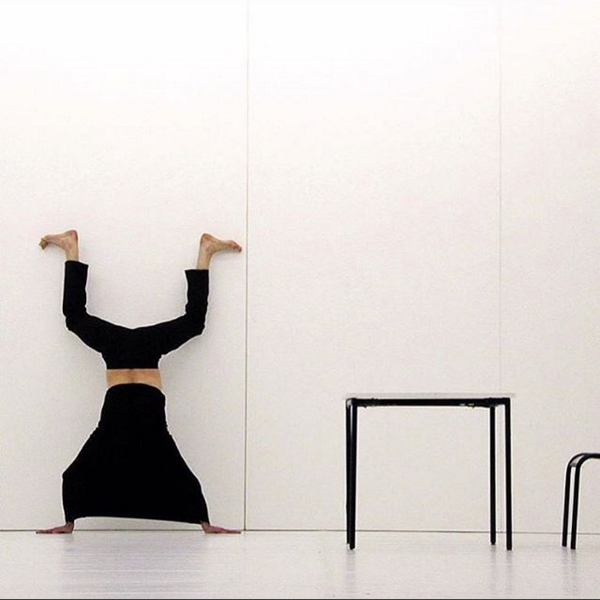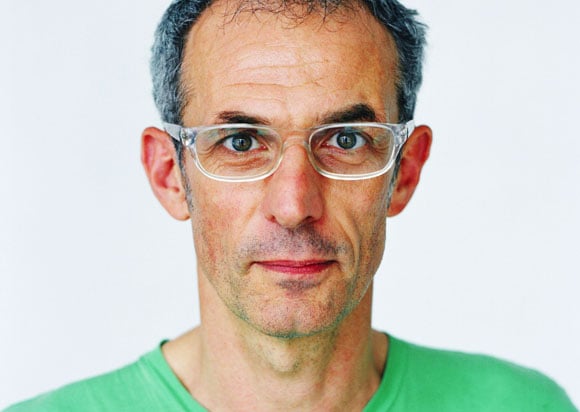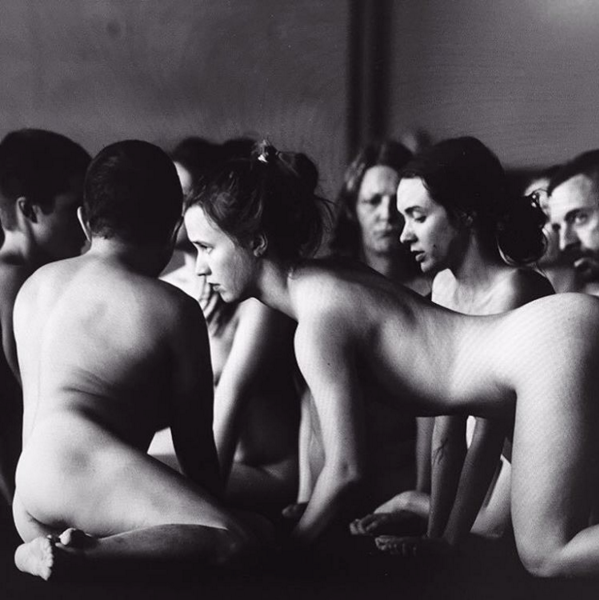Art & Exhibitions
Xavier Le Roy Requires His Performers to Undress and Crawl Around Naked for Hours
The piece premieres November 20.

The piece premieres November 20.

Cait Munro


Xavier Le Roy.
Image: kaldorartprojects.org.au.
French choreographer Xavier Le Roy and his collaborators are comfortable naked. More comfortable, perhaps, then they are in clothes. This is good news, because Temporary Title, Le Roy’s latest creation, requires 18 performers to be nude for six hours.
The piece premieres November 20 at Sydney’s Carriageworks space.
“Everybody is the same but is different,” Le Roy tells the Guardian. “The skin is great at [showing] that.”
Unlike some performance artists who employ nudity as a kind of shock tactic, Le Roy likes to view the human body as a prop—one that’s all the more sculptural and fascinating sans decoration. The performers work in shifts, and therefore must both dress and undress in front of the watchful eyes of the audience. They can crawl, but never stand, for the 360-minute performance.

Photo: Instagram/ @kaldorpublicart
“All these connotations that can be attached to the exposure of nakedness is actually not present and I think that’s what the public got and talks about,” Le Roy told the Daily Mail.
Le Roy laments, however, that because of the nudity, the project won’t be visited by any school groups. “Here it was very present, the prudishness and the fear,” he says, “which is sad because it means, of course, that the nakedness is associated [with] a certain exhibitionism.”
Also on view at Carriageworks is Self Unfinished, a 50-minute solo Le Roy created in 1998, and still his most famous work to date. Le Roy uses two black garments to transform his body into an intriguing quadrupedal figure. There is no musical score other than his voice, and occasional requisite coughs from audience members.
Le Roy, a former molecular biologist with a doctorate from the University of Montpellier, classifies his severance from academia as “a very painful breakup.” He made the jump to choreography in the early 1990s, and today he travels the world, focusing on placing contemporary dance in art museums and public settings.
“He’s one of the first artists to bring movement and dance into gallery spaces,” John Kaldor, founder of Kaldor Public Art Projects, told the Daily Telegraph. “This really is a paradigm shift. This is where I think art is going in the 21st century.”